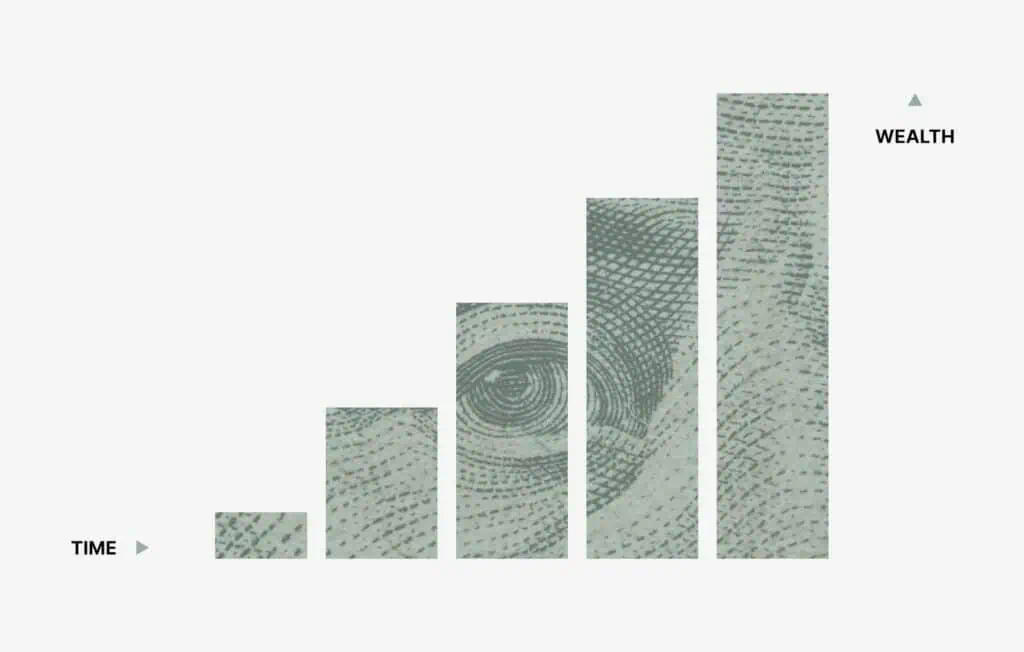It’s no secret that Americans today are facing some tremendous hurdles reaching a comfortable retirement in ways that previous generations didn’t. Disappearing pensions mean that many have to create steady income streams of their own in retirement. Longer lifespans coupled with rising inflation and healthcare costs make that task even more challenging. Add in an uncertain future for Social Security and the need for thoughtful planning and early investing becomes paramount.
I’ve heard some folks tell me that, while they are saving for retirement, they also are hoping to inherit at least some funds from their parents to help ease their retirement burden. In fact, the subject of “generational wealth transfer” has become a media fascination, both for its potentially enormous size and because it might help younger generations create their own financial security. I had this very discussion recently with an old Maritime shipping buddy, I’ll call him George, over some beers and pizza.
George and his wife, “Susan”, are in their upper fifties, with 2 adult sons out of the house who have successful careers and families of their own. They make a fairly moderate income, George as an accountant and Susan with her own decorating and design company. George mentioned that while he and Susan are diligent savers, they are hoping to receive a sizeable inheritance from George’s parents to help supplement their retirement plan. He admitted that they probably don’t save as much as they could for this reason. Being a good friend, I felt comfortable sharing my opinion with him – that they seem to be gambling with their future, and I really hope it pays off.
I didn’t mean to be a wet blanket, but there are some very real risks with this type of “planning”. While baby boomers have enjoyed decades of wealth-building through real estate and the stock market, among other things, health care costs could easily drain those resources faster for those who aren’t already very wealthy. According to a recent study from Fidelity, a single 65-year-old could need about $157,500 after taxes to cover their health care expenses in retirement, and a couple could need $315,000₁.
The Senior Citizens League argues that living costs for seniors have long outpaced inflation and hikes in Social Security payments, especially for people living into their 80s and beyond. Improvements in health care mean there will be more older boomers than any generation before them. But the cost of that health care means many of them will see their retirement savings go quickly if their health declines and they need long-term help₂.
I explained to George and Susan, this means that not only could their inheritance be reduced by George’s parents’ healthcare needs, but their own plan needs to account for this possibility as well. They could both encounter health issues in retirement that require additional funds from their savings.
But let’s assume you’re one of the lucky ones who does see a sizeable gift passed down. Now you need to figure out how to best manage these funds for maximum benefit. Let’s dig into a few of your options this week.
For starters, if you have any high interest debt, this should be a no brainer. Every dollar you pay in interest is one dollar less that can benefit from compounding growth. Pay off those credit cards or other high interest loans so you can devote those interest savings to your investments.
If you’re not already maxing out your retirement savings, consider your options – such as a Roth IRA or a backdoor Roth to help grow your wealth tax free. You might also check to see if your employer offers a Roth 401(k) option.
Next, review your retirement plan itself. Are you properly diversified? Are your assets correlated when they should be uncorrelated. And folks, be careful not to invest all of your money in a single stock or investment opportunity. Rather, consider your overall retirement system. For example, questions that should be answered such as, What is your risk budget, do you have one? What is your investing process, you need one. Are you going to stay in an outdated accumulation system when in fact you should be in a distribution system, incorporating downside risk mitigation techniques specifically designed for distribution planning. You see, incorporating a downside mitigation system into your program, implementing strategies that help to protect your wealth in volatile markets is crucial to preventing large losses you may not be able to recover from in time. Strategic and tactical asset management, combined with risk mitigation, can increase your chances for a successful retirement.
Think about how you might “pay it forward”, too. A sizeable inheritance might allow you to give more to your own loved ones. Assuming you’ve adequately planned for your own financial and healthcare needs, you might give family members a tax-free gift – as much as $18,000 per person in 2024, per giver. There are also a number of ways to donate to your favorite charity in a tax efficient manner, both while you’re alive and as part of your legacy plan.
Folks, above all, be realistic and practical with your planning. Don’t rely on assumptions – or hope – to secure your retirement. Hope is not a sound financial strategy. This way, the worst that can happen is that you save too much, something your loved ones might have the opportunity to appreciate someday.
And as always – be vigilant and stay alert, because you deserve more!
Have a great week.
Jeff Cutter, CPA/PFS is President of Cutter Financial Group, LLC, an SEC Registered Investment Advisor with offices in Falmouth, Duxbury, and Mansfield, MA. Insurance offered through its affiliate, CutterInsure, Inc.
We do not offer tax or legal advice. Jeff can be reached at jeff@cutterfinancialgroup.com. This information is intended to provide general information. It is not intended to offer or deliver investment advice in any way. Information regarding investment services is provided solely to gain a better understanding of the subject of the article. Different types of investments involve varying degrees of risk, including the potential for loss. Therefore, it should not be assumed that future performance of any specific investment or investment strategy will be profitable. Insurance product guarantees are backed by the financial strength and claims-paying ability of the issuing company. Market data and other cited or linked-to content is based on generally available information and is believed to be reliable. Cutter Financial does not guarantee the performance of any investment or the accuracy of the information contained in this article. Cutter Financial will provide all prospective clients with a copy of Cutter Financial’s Form ADV 2A, Appendix 1, applicable Form ADV 2Bs and Form CRS as well as the firm privacy policy. Please contact us to request a free copy via .pdf or hardcopy. 1. https://tinyurl.com/2p8xfk52 2. Ibid








